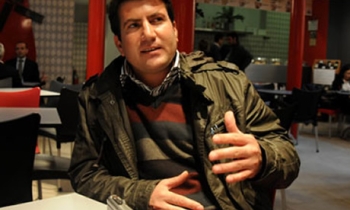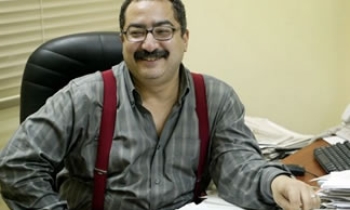Most major news outlets are unwilling to let the public see how their editorial process works, a new study has concluded. Fewer than half of the websites surveyed publicly corrected mistakes in their stories and only a handful shared with readers the journalistic and ethical standards that theoretically guide their newsrooms.
'Openness & Accountability: A Study of Transparency in Global Media Outlets' conducted by the International Centre for Media and the Public Agenda (ICMPA) concluded that journalists are not only reluctant to explain what they know and how they know it, their news organisations are also often loathe to admit mistakes, and loathe to publicly state their policies regarding their internal journalistic and ethical guidelines.

"News outlets call for transparency by others and are balking at transparency for themselves," noted researcher Susan D Moeller, a journalism professor at the University of Maryland and the director of ICMPA which conducted the study. "The media are in the position of saying to the Enrons and Arthur Andersens out there, 'Do as I say, not as I do."
The study analysed transparency in regards to the websites of 25 major news outlets in the United States, the United Kingdom and the Middle East. Guardian Unlimited came top and Sky News bottom in a study of media transparency and openness that has itself been criticised for methodological errors.
The scores (all on a scale of 5.0):
- Guardian, The: 3.8
- New York Times, The: 3.4
- BBC News: 3.2
- CBS News: 3.2
- Christian Science Monitor, The: 3.2
- NPR: 3.2
- Fiancial Times: 2.8
- Los angeles Times, The: 2.6
- Miami Herald, The: 2.6
- Washiongton Post, The: 2.4
- PRI: 2.2
- MSNBC: 2.0
- Wall Street Journal, The: 2.0
- International Herald Tribune 1.8
- Newsweek: 1.6
- USA Today: 1.4
- ABC News: 1.2
- Fox News: 1.2
- Economist, The: 1.2
- Daily Telegraph, The: 1.2
- CNN: 1.0
- Al Jazeera English: 0.8
- ITN: 0.8
- TIME: 0.6
- Sky News: 0.4

The ICMPA study investigated 25 of the world's top news sites to evaluate which of them open up their newsrooms to public scrutiny and comment. The aspects looked at were which outlets post corrections to their stories; which ones provide details about their owners and offer information about any other media and non-media holdings of those owners; which ones publish their internal guidelines for reporters (such as how potential conflicts of interest by reporters or editors are handled); which ones publish their internal standards for stories (such as how anonymous sources are handled or how politicised language is identified); and, which ones actively seek readers’ comments and complaints?
What most news sites manage best, the study concluded, was admitting to who owns them. Still even that public information is rarely prominent, and news outlets differ on the details they provide — most are chary, for example, about disclosing other media and non-media holdings of their parent corporations.
Most of news outlets surveyed managed a certain level of interactivity — most have at least one or two venues through which readers can make comments about the news coverage: through contacting an ombudsman, writing letters to the editor, emailing correspondents directly or talking with them via on-site blogs, live chats, or leaving remarks at the bottom of stories.
The distinct impression many of these outlets left, the report said, was that they were not really interested in considering readers’ opinions. In many cases, the interactivity possible on the websites seemed geared more to generate stickiness than to allow the newsrooms to hear and respond to readers’ complaints.
Only seven news outlets had ombudsmen (or their equivalent) — all newspapers, with the exception of National Public Radio and CBS. And even more striking was the fact that nine of the sites had no provision for visitors to write letters to the editor — effectively all of the broadcast outlets, with CNN and PRI’s “The World” being exceptions.
The greatest surprise to the ICMPA researchers was how most news outlets handle corrections. Most do not publicly acknowledge their mistakes. Only 11 out of the 25 news sites visibly posted corrections to their stories, and again, it was the broadcast outlets that had a particularly poor track record. The one major exception: CBS News. CBS has created a section of its news site, titled Public Eye, devoted to transparency.
The news outlets were also unwilling to make public their editorial and ethical guidelines. Many news outlets have internal documents that stipulate all kinds of standards for reporting and writing stories. Some are writing and editing concerns: how should reporters spell “Al Qaeda,” when can reporters use the term “terrorist,” and how many sources does it take to confirm a story? Other guidelines are in place to help reporters, editors, producers and others in the newsroom navigate their own behavior conflicts: can journalists be taken out to lunch, can they contribute to a political candidate, can they accept speakers’ fees?

"News outlets are missing an opportunity to demonstrate to their readers that they value accuracy and journalistic standards," said Moeller. "Now it's true that media transparency doesn't ensure that individual reporters will always be honest brokers of information - as Jayson Blair and Judith Miller taught the New York Times. But a news outlet's commitment to being transparent helps its visitors understand the judgments made by the news operation and gives those visitors a venue for complaints and criticism when something goes awry. Ultimately - if not immediately - transparency leads to accountability. And accountability leads to credibility."
The 25 online news outlets evaluated were ABC, Al Jazeera (English), BBC World Service, CBS, the Christian Science Monitor, CNN, the Daily Telegraph, the Economist, Financial Times, Fox News, the Guardian, International Herald Tribune, ITN, the Los Angeles Times, the Miami Herald, NBC/MSNBC, the New York Times, Newsweek, NPR, PRI/BBC/WGBH: "The World," Sky News, Time, USA Today, the Wall Street Journal, and the Washington Post. This study is the most recent report released by ICMPA, a centre of the Philip Merrill College of Journalism and the School of Public Policy at the University of Maryland.
After extensive training on quantitative and qualitative content analysis, 21 members of the research team evaluated the 25 news outlets on the basis of five criteria by using a coding survey. The five major categories that were looked at were:
- The outlet’s corrections pollicy: Willingness to openly correct mistakes.
- The outlet’s willingness to give information about their corporate (or other) owners.
- The outlet’s candor about its internal staff policies.
- The outlet’s candor about its internal reporting and editing policies.
- The outlet’s openness to reader comments and criticism.

Each news outlet was evaluated by at least two coders. In addition to quantitatively recording their findings, each pair of coders also kept written observations on each news outlet and recorded the link to the area of each news site in which the news outlet addressed a given transparency question. Two research members later went through the original findings to check the answers. Each answer was reviewed and checked to make sure the observations were consistent with the news outlets’ website. Once the coding was finalized the results were formatted in a spreadsheet and made ready for review.
The methodology of the study has come in for flak too. Former technology editor at BBC News, Alfred Hermida, wrote on Wednesday: "As a former news editor at the BBC News website, I was surprised by the results, until I realised that the study had looked at the BBC World Service site, rather than the actual BBC News website. It is hard to understand how the authors of the study could have considered the World Service site as the main BBC global news site. This is a fundamental error in methodology. The World Service site is not the BBC’s global news offering online. All the news on it is scrapped from the news website."









